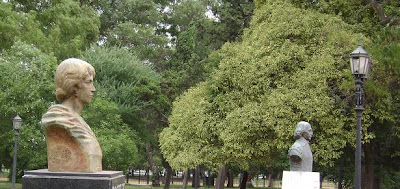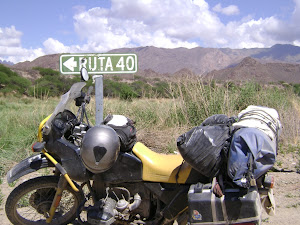Tigre is in the Province of Buenos Aires, about one hour north of the Capital by train. The actual train ride is more of a commuter, filled with business men and women on the weekdays, connecting the suburbs to the city. However, on Saturday, we joined the crowd of families with picnic coolers to the sunny waters of Tigre.
There is a matrix of connecting rivers that cover the northern territory of the province. All of the rivers connect to one another at some point before emptying out into the Rio de la Plata, separating Argentina from Uruguay. Along the river that flows through Tigre, a plethora of shops create busy crowds shopping for home furnishings, fresh fruit and souvenirs. I was very lucky and found a present for my mother after searching for two weeks.

After finding my mother's present, we sat down by the docks and enjoyed some lovely sandwich-itos of which Carolina so nicely prepared. Washing down the sandwiches with some mate, we decided to spend the afternoon exploring the rivers on one of the the commuter boats. Along these rivers, there is an abundance of cabins. The cabins are typically used as weekend resorts for city dwellers, however, there are many people that actually live in these cabins permanently. A series of boats move up and down the busy river system, dropping people off at docks that stick out like arms of a comb.

Carolina and I took a commuter boat to the municipal park about 30 minutes upstream from Tigre. There was a walking path that takes you through a number of cabins, winding through tall trees and crossing more rivers, which looked more like alleyways or side streets, filled with canoes and small boats. We enjoyed some more mate (I am really starting to fit in down here) before catching the last commuter boat to Tigre and watched the sun set into the western Argentine sky.















 Visiting La Boca, Buenos Aires, February 2nd, 2008.
Visiting La Boca, Buenos Aires, February 2nd, 2008.
